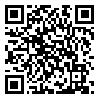1. Tinubu BM, Mbada ChE, Oyeyemi AL, Fabunmi AA. Work-related musculoskeletal disorders among nurses in Ibadan, South-west Nigeria: a cross-sectional survey. BMC Musculoskelet Disord 2010; 11:12. doi:10.1186/1471-2474-11-12
2. Punnett L, Wegman DH. Work-related musculoskeletal disorders: the epidemiologic evidence and the debate. J Electromyogr kinesiol 2004; 14(1):13-23.
3. Anghel M, Argesanu V, Talpos-Niculescu C, Lungeanu D. Musculoskeletal disorders (MSDs)-consequences of prolonged static postures. Journal of Experimental Medical & Surgical Research 2007; 16(4):167-72.
4. Hayes M, Cockrell D, Smith DR. A systematic review of musculoskeletal disorders among dental professionals. Int J Dent Hyg 2009; 7(3):159-65.
5. HSE. Annual Report for Great Britain. London, Britain; Health and Safety Executive, Health and Safety Statistics; 2013. Available from: http://www.hse.gov.uk/statistics/overall/hssh1314.pdf
6. HSE. Health and Safety Statistics: 2014/15 annual release. London, Britain; National Statistics, Health and Safety Executive. 2015 Oct. Available from:https://www.gov.uk/government/statistics/health-and-safety-statistics-201415-annual-release
7. Marras W. Occupational low back disorder causation and control. Ergonomics 2000; 43(7):880-902.
8. Garg A, Kapellusch JM. The Cumulative Lifting Index (CULI) for the revised NIOSH lifting equation quantifying risk for workers with job rotation. Hum Factors 2016; 58(5):683-94.
9. Sarkar K, Dev S, Das T, Chakrabarty S, Gangopadhyay S. Examination of postures and frequency of musculoskeletal disorders among manual workers in Calcutta, India. Int J Occup Environ Health 2016; 22(2):151-8.
10. Battevi N, Pandolfi M, Cortinovis I. Variable lifting index for manual-lifting risk assessment: a preliminary validation study. Hum Factors 2016; 58(5):1-14.
11. Torres Y, Viña S. Evaluation and redesign of manual material handling in a vaccine production centre’s warehouse. Work 2012; 41(Suppl 1):2487-91.
12. Waters TR, Putz-Anderson V, Garg A. Applications Manual for the Revised NIOSH Lifting Equation. Cincinnati (OH): U.S. Department of Health and Human Services Public Health Service, Centers for Disease Control and Prevention, National Institute for Occupational Safety and Health, Division of Biomedical and Behavioral Science; 1994 Jan. DHHS (NIOSH) Publication. Report No. 94-110.
13. Habibi E, Kazemi M, Safari Sh, Hassanzadeh A. The relationship between lifting capasity with the NIOSH equation and the risk of Musculoskeletal Disorders with the RULA method in health service personal of Isfahan, Iran. Journal of Health System Research 2012; 8(1):131-7.
14. Chung MK, Kee D. Evaluation of lifting tasks frequently performed during fire brick manufacturing processes using NIOSH lifting equations. Int J Ind Ergon 2000; 25(4):423-33.
15. Lin CJ, Wang SJ, Chen HJ. A field evaluation method for assessing whole body biomechanical joint stress in manual lifting tasks. Ind Health 2006; 44(4):604-12.
16. Mital A, Ramakrishnan A. A comparison of literature-based design recommendations and experimental capability data for a complex manual materials handling activity. Int J Ind Ergon 1999; 24(1):73-80.
17. Marras WS, Karwowski W. Fundamentals and assessment tools for occupational ergonomics. 2nd ed. Boca Raton, Florida, United States: CRC Press; 2006. P.918-48.
18. Russell SJ, Winnemuller L, Camp JE, Johnson PW. Comparing the results of five lifting analysis tools. Appl Ergon 2007; 38(1):91-7.
19. Garg A, Boda S, Hegmann KT, Moore JS, Kapellusch JM, Bhoyar P, et al. The NIOSH lifting equation and low-back pain, Part 1: Association with low-back pain in the backworks prospective cohort study. Hum Factors 2014; 56(1):6-28.
20. Waters TR, MacDonald LA, Hudock SD, Goddard DE. Provisional recommended weight limits for manual lifting during pregnancy. Hum Factors 2014; 56(1):203-14.
21. Garg A, Kapellusch JM, Hegmann KT, Moore JS, Boda S, Bhoyar P, et al. The NIOSH lifting equation and low-back pain, Part 2: Association with seeking care in the backworks prospective cohort study. Hum Factors 2014; 56(1):44-57.
22. Kapellusch JM, Garg A, Boda S, Hegmann KT, Moore JS, Thiese MS, et al. Association between lifting and use of medication for low back pain: results from the backworks prospective cohort study. J Occup Environ Med 2014; 56(8):867-77
23. Boda S, Garg A, Campbell-Kyureghyan N. Can the revised NIOSH lifting equation predict low back pain incidence in a “90-day-pain-free-cohort”? Proc Hum Fact Ergon Soc Annu Meet 2012; 56:1178–82. doi: 10.1177/1071181312561256
24. Waters TR, Lu ML, Piacitelli LA, Werren D, Deddens JA. Efficacy of the revised NIOSH lifting equation to predict low back pain due to manual lifting: expanded cross-sectional analysis. J Occup Environ Med 2011; 53(9):1061-7.
25. Marras WS, Fine LJ, Ferguson SA, Waters TR. The effectiveness of commonly used lifting assessment methods to identify industrial jobs associated with elevated risk of low-back disorders. Ergonomics 1999; 42(1):229-45.
26. Lu ML, Waters TR, Krieg E, Werren D. Efficacy of the revised NIOSH lifting equation to predict risk of lowback pain associated with manual lifting: A one-year prospective study. Hum Factors 2014; 56(1):73-85.
27. Varmazyar S, Sayrafi HS, Nikpay A. Assessing the recommended weight limit in manual carrying of loads in packaging lines of a factory in Qazvin. The Journal of Qazvin University of Medical Sciences 2011; 15(2):78-85.
28. Okimoto MLLR, Teixeira ER. Proposed procedures for measuring the lifting task variables required by the revised NIOSH lifting equation – a case study. Int J Ind Ergon 2009; 39(1):15-22.
29. Dormohammadi A, Amjad-Sardrudi H, Motamedzade M, Dormohammadi R, Musavi S. Ergonomics intervention in a tile industry: a case of manual material handling. Journal of Research Health Sciences 2012; 12(2):109-13.
30. Torres Y, Viña S. Evaluation and redesign of manual material handling in a vaccine production centre’s warehouse. Work 2012; 41 (Suppl 1):2487-91.








